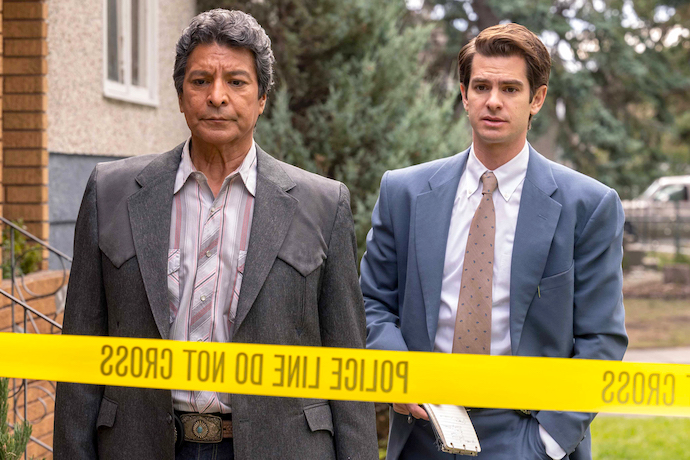I was a twenty-year-old missionary for the Church of Jesus Christ of Latter-day Saints in Washington DC in 2003. My companion and I, temporarily serving in a rural community about an hour southeast of the nation’s capital, had been teaching an elderly gentleman for several weeks. He was a widower, retired, and seemed mildly interested in our message. But something had changed when we returned on a clear-skied Thursday afternoon, as he appeared much more aloof and uninterested. When asked why, he pointed to a new book, just released, sitting on his coffee table.
It was Jon Krakauer’s Under the Banner of Heaven: A Story of Violent Faith.
No book on Mormonism has sold more copies in the past two decades than Krakauer’s riveting tale. It appeared on The New York Times Best Seller list for weeks in 2003 and remains a top seller nineteen years later. Other than the Book of Mormon itself, Under the Banner of Heaven has likely shaped more Americans’ minds about the LDS faith than any other book.
Rumors concerning a film adaptation appeared almost immediately, but the story will finally make its dramatic appearance as a true-crime miniseries this week. It stars Andrew Garfield as police detective Jeb Pyre investigating a tragic case that leads him to question a faith he thought he knew, uncover a past he didn’t know existed, and penetrate a community that many wish didn’t survive.
The series is bound to ask questions once again concerning not only America’s most famous home-grown religion, Mormonism, but also the nature and implications of belief more generally.
A vehicle for condemning Muslim violence
The LDS Church was coming off a publicity high at the moment Krakauer’s book arrived. Led by Gordon B. Hinckley, a nonagenarian with an infectious smile who’d directed the Church’s publicity outreach for decades before becoming its president in 1995, the faith had recently taken a much more congenial approach to American media. Hinckley was the first LDS president to hold sit-down, substantial, and televised interviews, which began with CBS’s 60 Minutes in 1996, and continued with Larry King, The New York Times, The Wall Street Journal, and Time.
Hinckley’s exuberant optimism and insistence on Mormonism’s gregariousness did much to change the faith’s reputation. The culmination of this new congenial approach was Salt Lake City’s hosting the 2002 Winter Olympics, which received international acclaim. The Church finally appeared to be gaining mainstream acceptance.
The honeymoon period wouldn’t last. Krakauer’s Under the Banner of Heaven appeared the very next year, immediately becoming a bestseller. The book tells the story of the grisly murders of Brenda Lafferty and her infant daughter, Erica, at the hands of her brothers-in-law, Ron and Dan Lafferty.
Though excommunicated from the LDS church, Krakauer argues that the brothers were inspired by their religious heritage. The Laffertys were the natural culmination of 150 years of history centered on blind obedience, religious zealotry, and violence. “Make no mistake,” Krakauer insists, “the modern Mormon Church may now be in the American mainstream, but it usually hugs the extreme right edge of the flow.”
There was a particular cultural context for this argument. In the wake of the 9/11 terrorist attacks, Krakauer wanted to discover the roots of “violent faith.” He insists that any belief in God is fundamentally irrational, therefore making violence its inevitable result. The “dark side to religious devotion” is that it “predictably” led to evil actions. Mormonism was, in the end, the means to condemn radical Islam.
The Church pursued by its plural past
The book’s immediate reach demonstrated how it struck a chord for an American public still trying to understand Mormonism. It seemed to confirm a suspicion that, despite a century of efforts toward cultural assimilation, the homegrown religion headquartered in Utah could not be fully trusted. Casting the Mormons as zealots was one topic on which secular humanists, who distrusted most ecclesiastical institutions, and evangelicals, who never fully accepted the faith, could agree. That the book was published shortly after Elizabeth Smart’s kidnapping at the hands of another Mormon extremist only added fuel to the fire.
Scholars were unpersuaded by Krakauer’s argument, and several historians outside the LDS faith have written about the problems with its reductive history and arguments. But mainstream Latter-day Saints were simply aghast. The Church felt so threatened by the book’s mass appeal that they issued three statements that meticulously challenged both specific historical facts as well as its general thesis. A legion of volunteer apologists penned tedious responses. Cultural acceptance seemed, once again, to be fleeting.
A crucial part of Krakauer’s tale is exposing the history of Mormon fundamentalism, the diaspora of polygamists spread across the Mountain West and constantly covered in American popular culture. Though LDS leaders publicly denounced plural marriage in 1890, it took several more decades to completely detach from the practice. When they did, many devoted believers saw it as a betrayal, and some eventually formed their own churches.
There are now over a dozen polygamous churches that each claim to be the “true” institution. Some are more traditional, like the FLDS sect led by incarcerated Warren Jeffs, while others appear more modern, like those that appear in the TLC reality series Sister Wives. All, however, are denounced by the LDS church, who take pains to distance themselves from what they see as an unfortunate connection to the past, and excommunicate anyone who enters a polygamous relationship.
In Krakauer’s tale, these fundamentalists are the link between Mormonism’s violent past and the Laffertys’ violent present. And while scholars have critiqued his understanding of fundamentalist history, and most fundamentalists emphasize that the Laffertys were part of a small and unrepresentative schism, the association forced the Latter-day Saint community to emphasize the difference once again between them. That this often requires Mormons to downplay their own past only adds to the complicated dialogue.
Two decades later, Under the Banner of Heaven is still a literary force. It often tops Amazon’s ranking for top sellers on Mormonism, and the new show will likely assure that doesn’t change.
A walk through Mormonism’s dark history
Krakauer wasn’t involved in the television series beyond his book serving as a primary source. It shows. Mormonism is depicted as far more multi-layered in this adaptation, and viewers will catch glimpses of a religious depth that the book never offered.
It also avoids the trappings of Krakauer’s fixation on the fundamentalist movement, only touching on those aspects that immediately influenced the Laffertys. And while there are the historical anachronisms one might expect given creative license, the dramatic retelling appears much truer to the historical picture than the book, with a few notable exceptions.
The series, adapted by acclaimed screenwriter Dustin Lance Black (Big Love, Milk) and directed by David Mackenzie, also exhibits several cultural fascinations from the post-Krakauer period. The political and libertarian influence on the Laffertys’ radicalization have echoes of more recent anti-government movements led by Cliven and Ammon Bundy. The focus on the brothers’ grievances toward their wives reflect the current anxieties concerning manhood. And the frequent examination of gender roles moves beyond the often-misogynistic undertones of Krakauer’s analysis.
The creation of a fictional detective at the heart of the story, Andrew Garfield’s Jeb Pyre, is a compelling move, as it provides a sympathetic viewpoint from which to follow the story, which goes to great lengths to emphasize the parochial and superficially sweet community that was 1980s Utah. (Viewers might assume it was against the law to complete any sentence without the word “brother,” for example.)
Despite these divergences from its source text, however, the series ultimately follows Krakauer’s general thesis. Whereas Pyre’s faith is innocent and simplistic, the role of truth-teller is given to Allen Lafferty, who’s introduced in the first episode as a sympathetic and credible confessor. Sympathetic, because his own wife and child were tragically killed by his zealot brothers; credible, because he was exposed to his brothers’ ideas but wise enough to reject them.
It’s Allen who walks Pyre—and, therefore, the audience—through Mormonism’s dark history, warning him that the church had “hidden our truths with their secret combinations.” Allen is our guide to what being a “good Mormon” really means, because he defines it as “extremists” like his brothers.
Allen is also an embodiment of the Krakauer-like figure driven by rational skepticism. Upon learning of Mormonism’s true past, he’s ready to dismiss it as a fraud and pronounce its flaws. Then, over seven episodes, he helps Pyre uncover the sickening plot that proved religion’s depravity.
The connection between sincere belief and violence
The show should be applauded for its commitment to depicting multiple versions of Mormonism: the compassionate yet structured Mormonism in which Brenda Wright (later Lafferty) was raised; the sweet yet naïve Mormonism of Detective Pyre and his wife; the caring and service-minded Mormonism of the Relief Society sisters who help Pyre’s family; and the radical and violent Mormonism of the Laffertys. All these versions of the faith make up the modern community.
Yet the show goes further. Of all these different genres of Mormonism, only one is depicted as the true successor of the religion’s origins. To be a “good Mormon,” according to the series, means being willing to do unspeakable things. The frequent and compelling cross-cutting between sacred and horror scenes—for example, between the early saints praying and an American general kneeling at the remains of the Mountain Meadows Massacre, or between Joseph Smith holding up his arm during the First Vision and a bloody hand opening Brenda’s daughter’s door—imply a direct, and perhaps even predetermined, connection between sincere belief and violence.
A generous interpretation is that the series demonstrates how some fundamentalist Mormons repackage the past to buttress their present. However, if that is the showrunners’ aim, it’s far from clear. Instead, the perspective follows that of Allen Lafferty who, after digging into the faith’s past, and witnessing its worst expression, issues a clear verdict: “If you really still believe your god is love,” he tells Pyre, “then you don’t know who you are, brother.” Mormonism, at its root, “breeds dangerous men.” Far from countering this opinion, offered in the first episode, the series only confirms it.
This notion that devoted obedience to the faith’s fundamentals “breeds dangerous men” fits into the much longer trajectory of how Americans have viewed Mormonism. It confirms a deep-seated suspicion that beneath the faith’s beguiling smiles and intrepid politeness is a rotten core—that the only thing required to transform a loyal saint into a cruel murderer is a deeper knowledge of Joseph Smith and Brigham Young. The true history is hidden because, if known, it creates killers.
Mormonism must, indeed, come to reckon with its violent past and patriarchal present. The community’s deep and entrenched reticence has itself contributed to onlookers assuming the worst. Mormons must be hiding something, is easy to conclude. But progress is also stymied by reductive depictions that make Latter-day Saints feel like their rich, complicated, and multi-layered faith and history has been condensed to its worst elements. The TV series does much better than Krakauer’s book at depicting the multitudes that Mormonism contains, but it still presents maliciousness as its core.
We’re living in a golden age of television, and Under the Banner of Heaven represents much of the industry’s best. It’s beautifully shot, impeccably acted, and movingly scored. The storyline vacillates from suspense to soul-searching, and the cinematic effects are useful and riveting. Though the storytelling can at times be a tad loose—the Pyre family’s narrative is never fully developed, nor is Ron’s descent to madness fully believable—it remains overall quite compelling.
Even if religion scholars might wince at Mormonism’s reductive framing, much of which takes place in the first episode, most will enjoy the show as it settles into the well-established groove of a true-crime mystery. Whether or not the series makes a big splash, or has a lasting impact, it’s unlikely to significantly alter the legacy of the Church left by Krakauer’s book.





